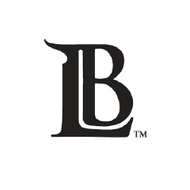
(View Complete Item Description)
Examples of Youth Activism in U. S. History with Links to Teaching and Learning ResourcesThe Lowell Mill Girls, 1830sThe Lowell Mill Girls Go on Strike, 1834Harriet Robinson: Lowell Mill Girl Teenage Soldiers in the Civil War, 1861-1865The Boys of War: Portraits of Children Who Served in the War The March of the Mill Children, 1903Philadephia Mill Children March Against Child Labor Exploitation, 1903, Global NonViolent Action Database, Swarthmore CollegeSee Influential Biography page on Mother Jones The American Youth Congress, 1934Background on the American Youth Congress from Eleanor Roosevelt Papers ProjectWhy I Still Believe in the Youth Congress by Eleanor Roosevelt, April 1940The Declaration of the Rights of American Youth, American Youth Congress, July 4, 1936The Little Rock Nine, 1957Little Rock School Desegregation Ruby Bridges, 1960Ruby Bridges Goes to School The Birmingham Children's Crusade, 1963How the Children of Birmingham Changed the Civil Rights Movement Tinker v. Des Moines, 1965In this case the Supreme Court ruled that school students are persons under the constitution; school officials do not possess absolute authority over their studentsSupreme Court Case Summary Students for A Democratic Society (SDS), 1960sLargest radical student organization in the 1960sLinks to Resources from SDS and other organizationsBerkeley Free Speech Movement, 1964-1965Free Speech Movement and the New American LeftClips from Decision in the Streets by Harvey Richards on YouTubeBerkeley Fight for Free Speech Fired Up Student Protest Movement School Girls Unite, 2004 to PresentBrief History of an Historic Youth-Led Campaign Dakota Access Pipeline Protests, 2016Youth Activism and the Dakota Access Pipeline, The Choices Program, Brown University Additional examples of youth activism can be found in the Democratic Teaching Section on the wiki resourcesforhistoryteachers from the College of Education, University of Massachusetts Amherst.
Material Type:
Lesson Plan
Author:
Robert Maloy




















